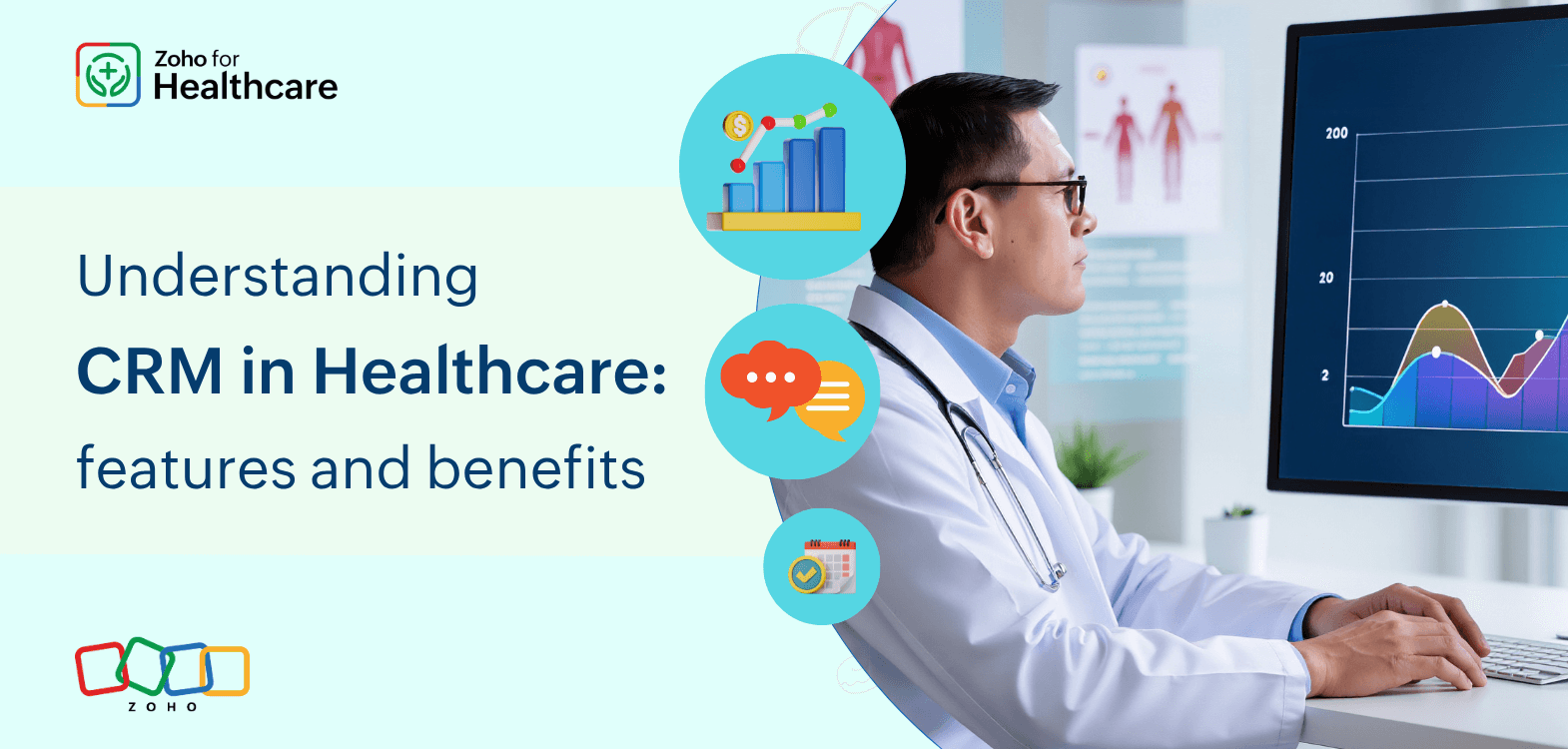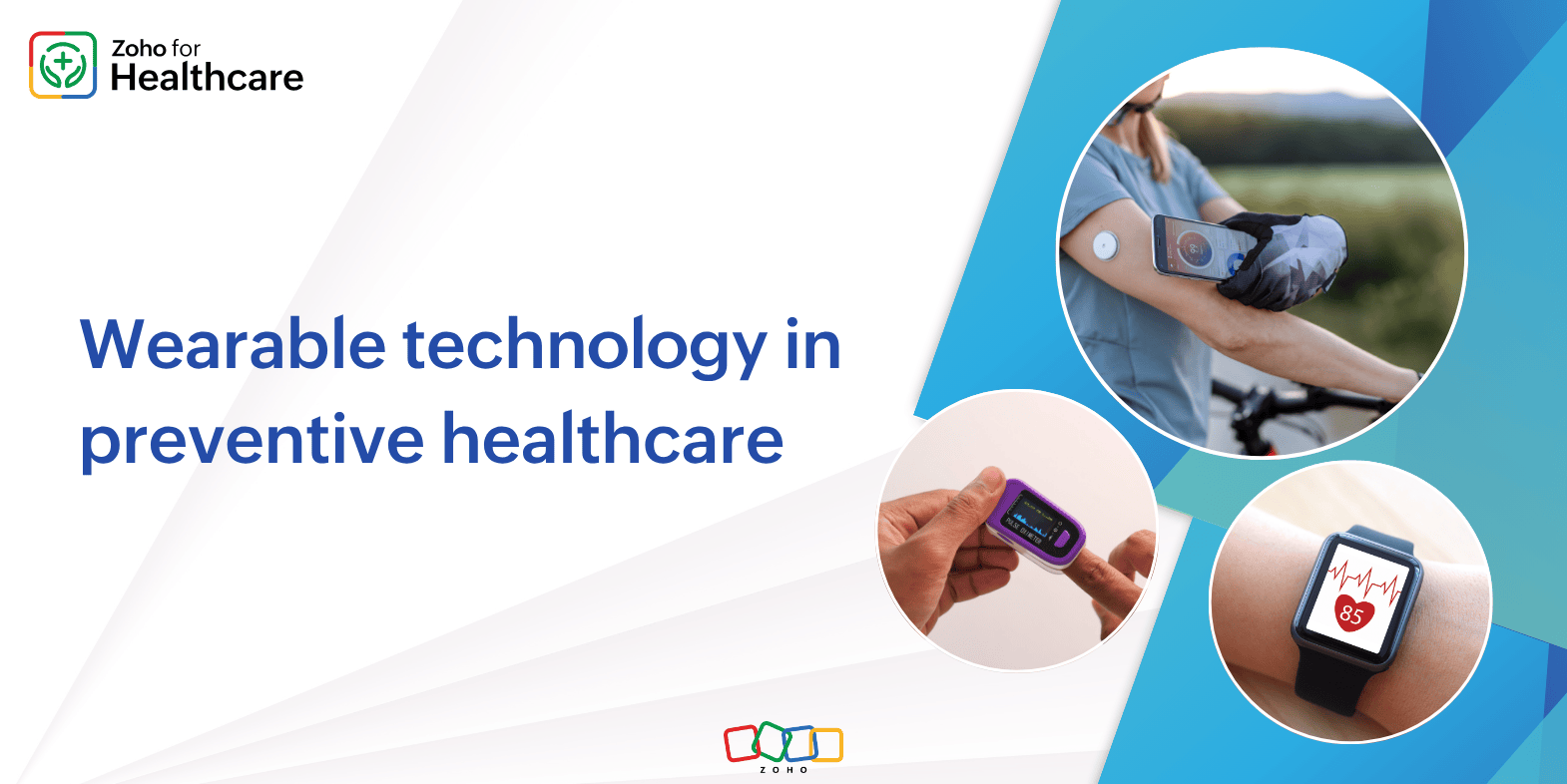- HOME
- Digital Health
- Understanding CRM in Healthcare: features and benefits
Understanding CRM in Healthcare: features and benefits
- Last Updated : November 1, 2025
- 145 Views
- 10 Min Read

Running a hospital or clinic is no easy task. Every role, whether it’s at the front desk, in administration, on the staff, or as a patient comes with its own set of challenges. But how do these challenges affect the healthcare system?
Imagine a receptionist answering ringing phones, rescheduling appointments, and entering patient details while the waiting room fills up with impatient patients. Administrators are moving between departments, handling staffing issues, tracking down missing paperwork, and making sure all compliance requirements are met, all while time is running short. Meanwhile, patients are waiting, worried if their test results got lost, hoping their doctor remembers their last visit, and hoping someone is keeping track of their care.
With so many moving parts, even small delays or missteps can ripple through the system, affecting efficiency, staff productivity, and the overall patient experience. That’s where a healthcare CRM comes in, streamlining processes, reducing errors, and keeping everyone connected.
By bringing all of these fragmented processes into a unified, patient-focused system, hospitals can work smarter, reduce mistakes, and keep patients more engaged in their care. It’s no surprise that healthcare CRM adoption is growing rapidly worldwide.
Did you know?
Healthcare CRM was valued at $17.9 billion in 2023 and is expected to hit $30.7 billion by 2030, according to research, growing at an average annual rate of around 7.9% from 2023 to 2030. These numbers are more than just statistics; they highlight the ongoing digital transformation and revolution in the healthcare industry and show how healthcare organizations are increasingly adopting CRM solutions. With such impressive growth, it’s clear that healthcare CRM is becoming an essential technology in modern healthcare.
But let’s break it down further:
What exactly is healthcare CRM?
How is it different from a traditional CRM?
And, maybe most importantly, why are healthcare organizations adopting it on such a large scale?
So, what is a CRM?
CRM refers to customer relationship management, an application or a platform that helps companies across various industries, be it retail, manufacturing, tech, finance, and more.
It helps manage everything from initial interactions to converting leads into customers. The various steps of lead management are assessment, allocation, engagement, and follow-up. Not just limited to lead management, CRM typically enables businesses to connect with customers through omnichannel communication, including sales calls, marketing emails, SMS, web forms, and more.
Overall, CRM is used to improve sales, customer service, and marketing efforts.
Is a healthcare CRM different from a traditional CRM?
Yes, a healthcare CRM is not the same thing as a traditional CRM.
While traditional CRMs are designed primarily for sales and customer management, healthcare requires a very different foundation: patient-centricity.
A traditional CRM helps businesses manage relationships, track interactions, and drive engagement through sales and marketing automation. Its focus is growth through conversions and customer retention.
A healthcare CRM, on the other hand, is built to nurture relationships grounded in trust and care, not just transactions. It securely stores and manages sensitive patient information, supports compliance requirements and ensures that every interaction contributes to a better care experience.
The primary goal of a healthcare CRM is to:
Improve patient relationships.
Streamline communication between patients, providers, and staff.
Enhance the overall quality of care delivered.
In other words, while traditional CRMs optimize for business growth, healthcare CRMs optimize for patient well-being and seamless care delivery.
In fact, according to other research, healthcare providers invested $7.3 billion in CRM solutions in 2023, highlighting how essential these CRM tools have become in the medical field.
The growing importance of CRM in healthcare
Healthcare CRM enables hospitals and clinics to deliver patient-centered care by managing all interactions with patients, referring doctors, labs, insurance companies, and more. It centralizes and keeps track of patient details such as visits, reports, and conversations in one centralized location.
It also automates reminders for appointments, medical reports, or follow-ups via SMS, email, or WhatsApp. Beyond daily operations, healthcare CRM also provides actionable insights that help organizations optimize workflows and enhance the overall quality of care.
Today, many healthcare organizations are adopting healthcare CRM technologies to take a more personalized approach, prioritizing patient needs while nurturing long-term relationships through continuous engagement and support.
Capabilities of a healthcare CRM
Let’s dive deeper into the core features of healthcare CRM that make it so valuable.
Patient management
This includes managing patient interactions from the initial inquiry to receiving healthcare services.
The stages of patient management include:
Patient enrollment: The first step is to get all of the essential information about the patient like name, gender, contact information, and more. The initial information collection can be done via online web forms, phone calls, walk-ins, or any type of referral.
Patient assessment: In this stage, evaluate the patient’s needs and health concerns. This may involve initial consultations, health questionnaires, or screening calls to understand patient condition and prioritize care accordingly.
Staff allocation: Once the patient’s needs are assessed, they’re assigned to the appropriate healthcare provider or specialist based on factors like medical condition, insurance coverage, or location. This ensures that patients receive care from healthcare professionals who are most appropriate for their condition.
Patient engagement: Patient engagement involves maintaining communication through appointment reminders via WhatsApp or SMS, educational materials, and others to support ongoing care and address patient concerns.
Patient tracking: Throughout the patient management process, healthcare providers use CRM or electronic health record (EHR) systems to track patient interactions, treatment plans, and health outcomes. This data helps improve patient care, streamline workflows, and support informed decision-making.
Appointment scheduling
After patient intake, patient assignment, and initial enquiries, the next step is to create an appointment for the patient.
Medium of appointments: Appointments can include walk-ins and phone calls, or scheduled via web forms available specifically for healthcare. Offering multiple appointment mediums helps improve accessibility and ensures a smoother patient experience.
Patients availability: Understanding and aligning with the patient's preferred time and date is essential. This may involve capturing preferred time slots according to availability during the onboarding or engagement process.
Calendar integration: To streamline scheduling and avoid conflicts, healthcare CRMs can integrate with healthcare provider’s calendars. For example, they can use calendars, such as Zoho Calendar, that offer real-time visibility into available time slots, automatic updates, and synchronization for reminders.
Healthcare CRM should ideally integrate with a variety of third-party tools like Zoom, Google Meet, Asana, Slack, and Microsoft Teams. It should also allow for importing events from iCal, CSV, and Google Calendar formats.
Marketing automations
In healthcare, marketing automation helps providers and organizations build stronger relationships with patients by delivering timely, personalized, and compliant communications. Zoho offers 55+ applications, and one of them is a marketing automation tool.
Patient enquiry: Capture patient information from multiple touchpoints like website forms, landing pages, pop-ups, social campaigns, events, and even imports from any CRM or other services.
Patient nurturing: Provide personalized and relevant communication, such as emails and educational materials to patients. These materials support patients throughout their health journeys, encourage active engagement, and help them make informed care decisions.
Web analytics: Gather, measure, and analyze data from a website to understand and optimize web usage. This also helps in understanding visitor behavior and site performance. It helps identify high-performing and underperforming content. Additionally, it helps optimize marketing campaigns and site UX, improving conversion rates such as signups, purchases, and downloads.
Cross-channel marketing: Engage patients across multiple marketing channels, such as email, SMS, social media, WhatsApp, and hospital or clinical websites. These platforms help ensure a unified and consistent experience at every patient touchpoint.
Marketing planner: Plan, manage, and track marketing efforts by allocating budgets and executing multiple marketing activities both online (such as social media, email, PPC ads) and offline (such as events, direct mail, and in-store promotions) while analyzing performance metrics.
Omnichannel communication
Manage interactions with patients and caregivers within the healthcare ecosystem through omnichannel communication. The integrated communication platforms help coordinate care, improve patient outcomes, and enhance patient engagement by connecting all stakeholders.
The different mediums of communication include:
Email: Run email campaigns such as newsletters, health awareness initiatives, wellness tips, and promotional offers to engage patients or customers. Emails can also be used to send automatic confirmation messages when a patient books an appointment, reminder emails before the visit, and feedback request emails after the visit. All interactions are logged in the CRM for future reference.
Social media: Manage all social media conversations, such as those on Facebook and Twitter, by integrating them into the CRM. Comments and feedback on these platforms can be tracked and resolved directly from the Social tab within the CRM. This helps you monitor social media trends and keeps medical facilities well-informed.
SMS and WhatsApp: If the medical provider has an SMS/WhatsApp business account, integrating it with the CRM will allow you to communicate with and educate patients through simple text messages, including appointment reminders, follow-ups, health related tips, and more.
Web forms: Online forms that are embedded on websites or landing pages allow visitors to submit information such as contact details, enquiries, or feedback, which is then collected and processed. The next step is to capture patients from contact forms on landing pages or websites and feed them directly into the CRM.
Telephony management
This helps with engaging, managing, and receiving calls efficiently by logging important details and tracking call information automatically. It also allows setting up reminders and analyzing calls for better performance. Alerts or notifications remind patients and healthcare providers about upcoming or missed calls.
EHR/HIMS integration
EHRs improve the quality of patient care, especially when they’re integrated with existing HIMS, EHR, and other healthcare systems. This integration enables real-time updates, accurate patient data, and efficient referral handling. It also supports adherence to healthcare standards and data privacy regulations by maintaining consistent and secure health records across all systems.
In Zoho for Healthcare, our primary vision isn’t to replace legacy systems, but to empower healthcare organizations’ workflows and bridge gaps within their existing healthcare systems.
Patient referral management
Patient referral management is designed to streamline patient referrals, improve collaboration between doctors, and enhance patient experience. The application ensures that many features such as referrer payouts, visitor planner, journey planner, expense planner, and much more.
Once we’ve explored the features of a healthcare CRM, let’s now take a closer look at its benefits and see how they empower healthcare organizations to improve patient care, streamline operations, and drive better outcomes.
The benefits of a CRM in healthcare
Implementing a healthcare CRM offers a range of benefits that can enhance both operational efficiency and patient outcomes. The healthcare CRM helps deliver personalized communication through preferred channels like email, SMS, and WhatsApp. The next big benefit is to improve patient satisfaction by keeping them informed and involved in their care journey.
Patient engagement
Patient engagement includes appointment, follow-up reminders and omnichannel communication across SMS, email, WhatsApp, or phone. Features such as appointment reminders, post-visit follow-ups, and health education help build trust and improve patient satisfaction.
Centralize patient data management
Healthcare CRM is a centralized data management platform where you can store all patient information, store patient data, and much more. Maintain a 360° view of each patient by consolidating demographics, appointment history, interactions, and preferences into one unified profile that is accessible to all relevant teams.
Increased sales
Identify and convert more patients with CRM-powered outreach, follow-ups, and referral tracking. Upsell relevant services (e.g., diagnostics, follow-up packages) based on patient history and preferences. Improve revenue through better recall and retention strategies.
Reporting and analytics
Get detailed reports and actionable insights through customizable dashboards and reports. Track patient acquisition, campaign effectiveness, staff productivity, and appointment trends to drive smarter decisions and continuous improvement.
Ensured compliance and data security
Aligning with healthcare regulations such as HIPAA, GDPR, and local laws is essential in healthcare CRM.
In India, for example, compliance is governed by the National Health Authority (NHA), which includes initiatives like the Ayushman Bharat Digital Mission (ABDM) and the Ayushman Bharat Health Account (ABHA). Healthcare providers and technology platforms handling patient data must adhere to NHA’s policies, especially if they’re part of the ABDM ecosystem. In other regions, regulations vary. For example, in Dubai, compliance falls under NABIDH (Network & Analysis Backbone for Integrated Dubai Health), while in Saudi Arabia, it’s governed by NPHIES (National Platform for Health and Insurance Exchange Services).
It’s crucial to protect sensitive patient data through measures such as role-based access, encryption, audit logs, and automated consent management.
System integrations
The healthcare CRM should integrate seamlessly with existing legacy systems such as EHR, EMR, HIMS, CDSS, billing platforms, telehealth tools, communication systems, and much more. This integration helps eliminate data silos and enables a cohesive, real-time flow of information across departments.
Once we’ve explored the benefits of healthcare CRM, let’s take a closer look at regional market trends and how these features are being adopted worldwide.
Regional market trends in healthcare CRM
From this context, it's clear that the healthcare CRM market is vast and growing rapidly across the globe.
Let’s take a closer look at the key regional players and what drives their market growth.
North America
Healthcare CRM is dominated by North America, capturing 59% of the total revenue. The key drivers are a robust healthcare infrastructure, high adoption of digital health solutions, and the presence of major healthcare technology providers.
Europe
The next region that contributes significantly is Europe. The healthcare CRM market size was valued at USD $12 billion in 2024 and is expected to reach USD $29 billion by 2033. The adoption of healthcare CRM is driven by factors such as a strong emphasis on patient-centered care, integration of AI and machine learning in CRM systems, and supportive government policies promoting digital health.
Asia Pacific
Finally, Asia Pacific captured 9.6% of the global market share in 2022. This growth is due to government healthcare efforts and a focus on building a better healthcare infrastructure.
Some notable examples in the Asia Pacific region include:
India: With the Ayushman Bharat Digital Mission (ABDM) and a government push for digital health records, India is rapidly adopting healthcare IT solutions.
Singapore: Through the National Electronic Health Record (NEHR) system, Singapore is building a fully connected healthcare ecosystem.
Comparing top healthcare CRMs
Let’s look at a comparison of five healthcare CRMs, including trial availability and key features.
Healthcare CRM | Trial period | Top key features |
14 days |
| |
30 days |
| |
Unavailable |
| |
Unavailable |
| |
14 days |
|
Shaping the next era of healthcare CRM
The future of healthcare CRM isn’t just about software, it’s about transforming how healthcare works. Today’s CRMs go far beyond managing patient records. With AI, machine learning, and cloud technology, they’re becoming the backbone of smarter, more efficient care.
Imagine a system that:
Automates routine tasks like patient registration, appointment reminders, billing, and insurance verification so your staff can focus on what truly matters—personalized care through feedback driven insights.
Provides intelligent insights to help healthcare teams make faster, smarter decisions, optimize workflows, and improve patient outcomes.
Integrates seamlessly with existing systems like EHRs and HIMS, while ensuring top-notch data security and strict regulatory compliance.
Wrapping up
With a healthcare CRM, hospitals and clinics can operate more efficiently, reduce errors, and deliver a truly personalized, patient-centered experience. It empowers administrative staff by automating routine tasks and reducing their workload, while doctors can cut down on paperwork so they can spend more time with patients.
By streamlining processes, reducing errors, and keeping everyone connected, healthcare providers and facilities can focus on what matters most—high-quality patient care.


